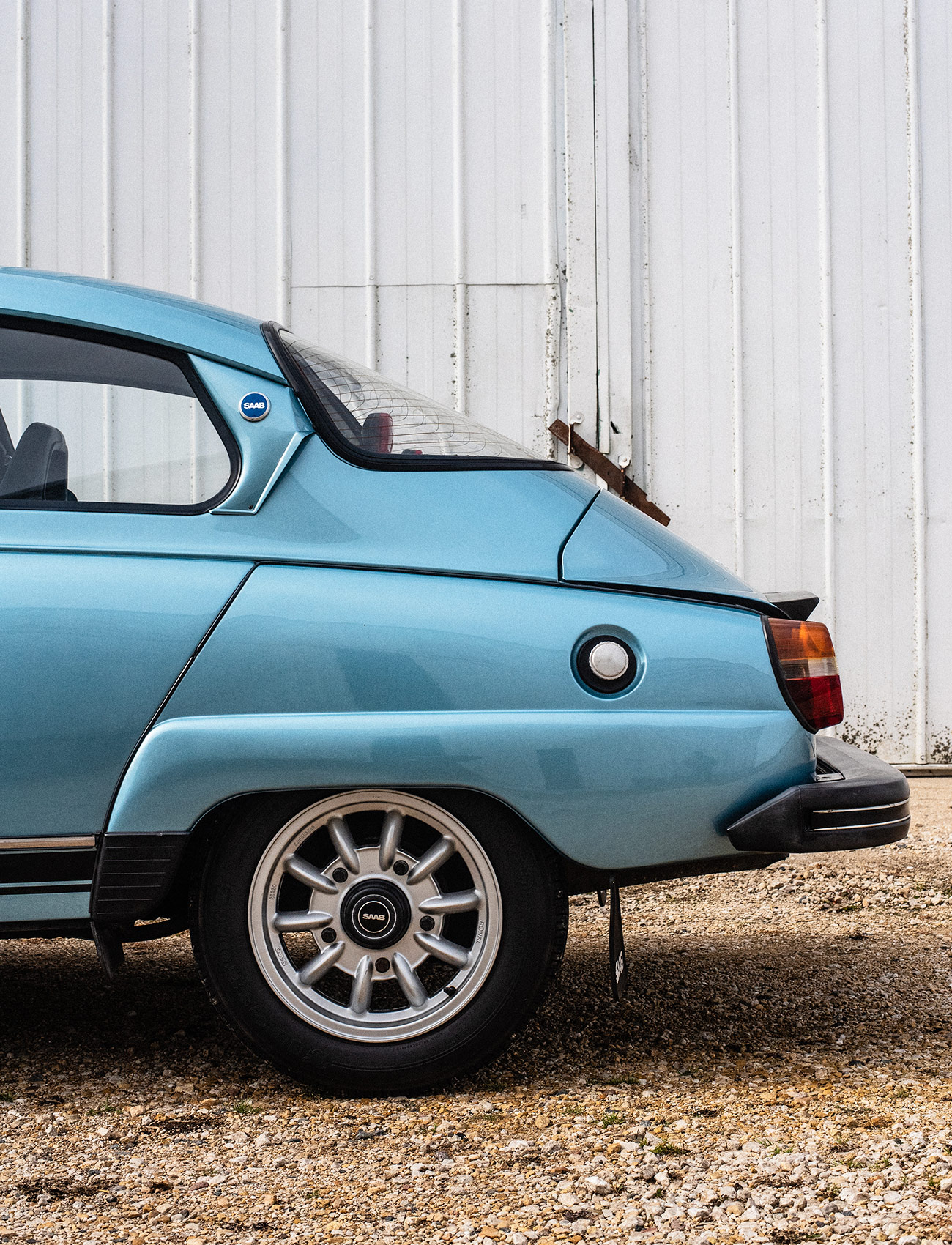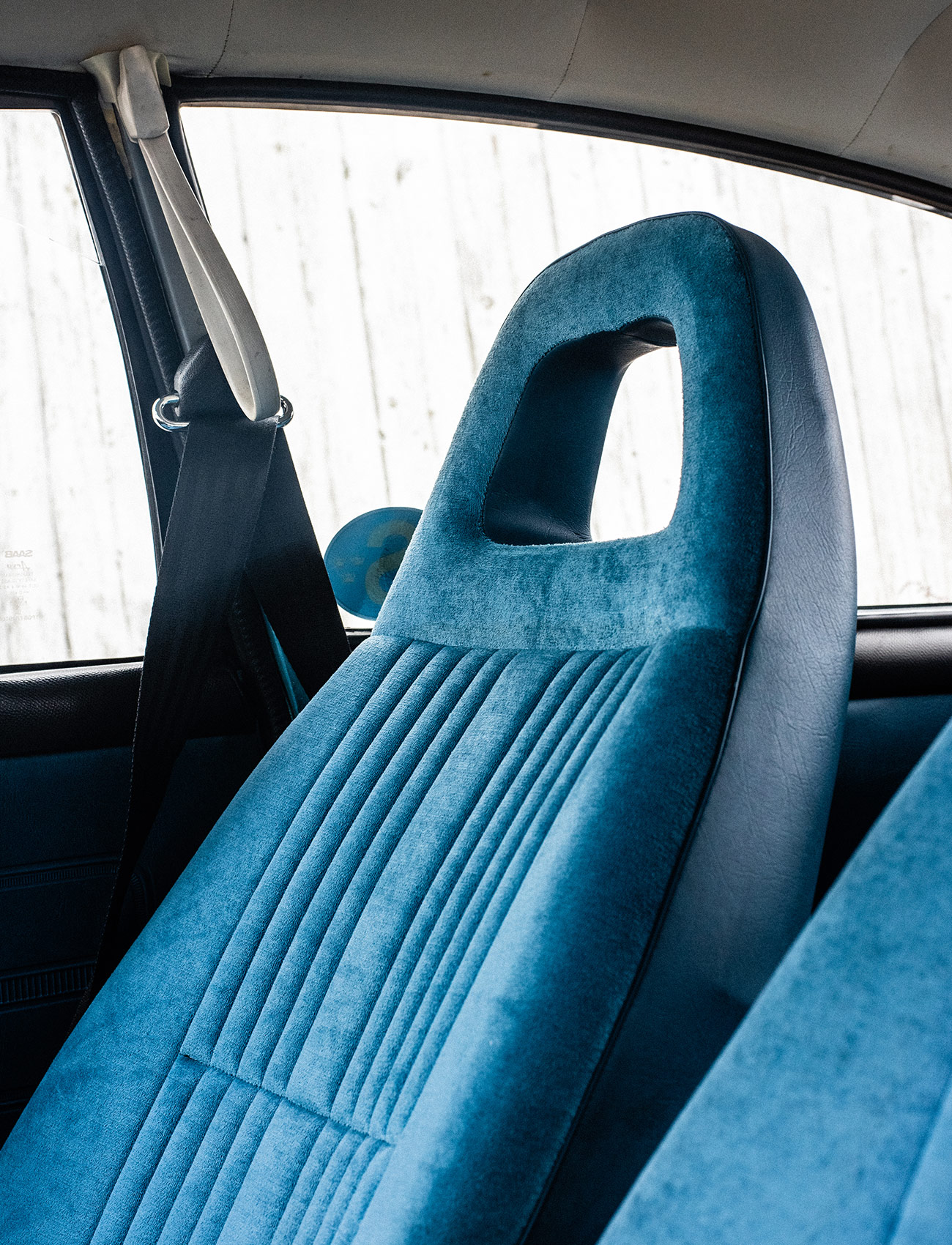If you were to spectate a European rally event during the early 1960s, you’d have heard the distinct buzzing, brapping yelp of a certain two-stroke engine bouncing off the hills and trees and echoing through the valleys. The source of the ruckus: a round, teardrop-shaped coupe from a then-obscure little automaker called Saab. The car was called the 96, and the driver was Erik Carlesson, a “moon-faced, 250-lb Swede” (Autoweek’s words, not mine) with an exuberant driving style. The pairing was unorthodox but successful: Carlesson and the 96 won a number of notable rallies, including multiple first-place finishes at the Rally Monte Carlo and RAC Rally in Wales.
Technically speaking, the 96 was not Saab’s first car; it wasn’t even it’s second (that’d be the 93). But the 96 and its rally wins helped put the emerging automaker on the map. But its roots can be traced to the airplane builder’s foray into the automotive industry, the 92. The 92 was far from a smashing success when it initially debuted in 1950, but it did provide the Saab brand a unique and impressive platform on which to build. It featured a three-cylinder two-stroke engine, a front-wheel-drive (thus relatively spacious) layout and an aerodynamic body formed with the assistance of a wind tunnel, at that time a technology mostly reserved for airplane manufacturing.
Like the 93 before it, the 96 was an update on that original 92 platform, this time to the tune of updated mechanicals, a bigger engine and styling tweaks. Most notably, the early version of the 96 received a larger two-stroke engine which was eventually replaced by a four-stroke V4 in 1966. And while the 92 and 93 sold in the tens of thousands of short productions runs, the 96 saw much more success: it stuck around for 20 years after its debut in 1960, and Saab managed to move over half a million units.

Of those hundreds of thousands of 96s, the one pictured here, which I drove, is one of the very last examples ever made. In 1980, the 96’s last year of production, Saab ended on a high-note, introducing a special model called “Jubileum,” which consisted of 300 limited-run models that were specified identically, but all to perfection. The mechanicals were no different compared to the regular 96 — its 68-horsepower V4 engine and four-speed manual remained — but the car received a brilliant powder blue paint job, special alloy wheels, special trim and upgraded blue seats, basically taken from the Saab 99.
It’s about as obscure a car as you could possibly get, but for Saab enthusiasts, it’s a grail-tier car. Marc Vernon, who owns this model, has owned a total of 11 in his lifetime; given that the 96 was not imported to the U.S. after 1973, its presence here in Chicago is all the more remarkable. Vernon had been on the hunt for a late model 96 from Europe when he came across a Jubileum for sale on “a sort of Swedish Craigslist.” According to Vernon, the seller responded to an email inquiry two weeks later to say that specific car had sold but that, as luck would have it, he had another Jubileum for sale. After a ten-month buying, inspecting and importing process, the car arrived at Vernon’s door.
When Saab officially went defunct in 2012, its fanbase was devastated, though few were truly surprised. There was an endearing weirdness to Saab and its approach to carmaking — half brilliant, half flummoxing — that made it lovable but did little to sustain it as a viable business. But drive a 96 and you can see why enthusiasts remain loyal to the dead marque: quirks abound, like seatbelts that loop through a latch (rather than buckle) and c-pillar winglets that supposedly aid in aerodynamics.
Arguably the thoroughly weird 96’s strongest selling points are its engine and drivetrain. Even into the 60s, Saab was selling road car powered by two-stroke engines with only seven moving parts, but even in that context, the V4 is a bit of a quirky choice. The only other automakers to ever put a V4 into a car are Ford (only in Europe), Lancia, Matra and ZAZ, a Ukrainian carmaker that I swear absolutely exists.
What’s more bewildering is the way the V4 puts its power down: through a freewheel, which disconnects the engine from the driveshaft when your foot lifts from the throttle. The freewheel device is actually an essential piece of a two-stroke drivetrain, as it prevents the engine from oil starvation when the car’s fuel-oil mixture isn’t being sent to the engine. Where it definitely isn’t essential is on a four-stroke engine like this one, where engine lubrication isn’t dependant on throttle input.
Still, Saab decided to keep the freewheel from the two-stroke drivetrain intact for its four-stroke V4 model. There is, however, a benefit to this: you don’t need to use the clutch to change gears. There is a clutch pedal that must be used to get the car moving into first from a standstill, but from there you simply take your foot off the gas, then slide the column-mounted shifter into the next gear. Imagine that: Saab created one of the first (sort of) semi-automatic transmissions, seemingly by accident.

Of course, because this is Saab, there’s a more inconvenient downside, which is a lack of engine braking, since the transmission won’t slow the car down on its own. This means you’ll wear through your brakes more quickly and, on an operational level, you’ll need to anticipate stops a bit more than usual. But because this is a Saab, its all part of the charm.
There’s a rhythm to it all that must be navigated smoothly: roll onto the throttle; hear the boxer-like V4 reverberate throughout the cabin; lift off your foot and slide the shifter down into second; hit the gas, lift off; up and forward into third; then down for fourth; then start pressing into into the brakes to stop for that intersection looming a half-mile ahead. Good driving is deliberate driving, and the 96 rewards you for being deliberate.
It’s a fool’s errand to drive fast in a 96 because the car isn’t fast, at least not inherently. The Saab 96’s success in rally came not from brute power, but an ability to retain grip and composure on slippery surfaces like gravel and snow. Because I was driving on perfectly dry tarmac (and because I’m not even remotely close to possessing Carlesson-level skill) I didn’t really get a sense as to how it can handle in those conditions, but the car’s history of rally success is convincing enough to me.
Honestly, I’m not sure that you buy a car like this for some exceptional driving thrill (though don’t get me wrong, it is fun). Rather, the highlights of the 96 boil down to its blatant Saabness. That may seem like a cop-out conclusion, but the Saab 96 is the product of an automaker marching to the beat of its own drum, sparing no fucks along the way. That attitude may have very well killed Saab in the end, but it left us with a car — an entire lineup of cars, really — with irrefutable character and blatant disregard for the status quo.

